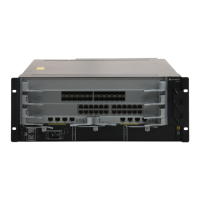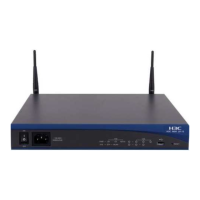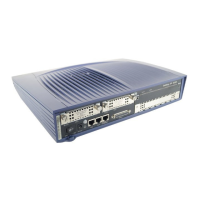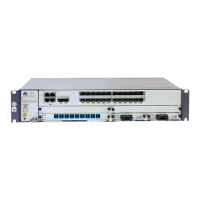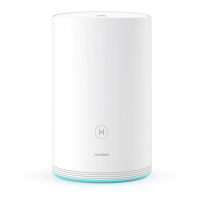Command Manual - Routing Protocol
Quidway S6500 Series Ethernet Switches Chapter 3 OSPF Configuration Commands
Huawei Technologies Proprietary
3-34
ip-mask: IP address wildcard shielded text (similar to the complement of the IP address
mask).
Description
Using network command, you can configure the interface running OSPF protocol to
which the interface belongs. Using undo network command, you can cancel the
interface running OSPF.
By default, the interface does not belong to any area.
With the two parameters, ip-address and ip-mask, one or more interfaces can be
configured as an area. To run the OSPF protocol on one interface, the master IP
address of this interface must be in the range of the network segment specified by this
command. If only the slave IP address of the interface is in the range of the network
segment specified by this command, this interface will not run OSPF protocol.
For the related commands, see ospf.
Example
# Specify the interfaces whose master IP addresses are in the segment range of
10.110.36.0 to run the OSPF protocol and specify the number of the OSPF area (where
these interfaces are located) as 6.
[Quidway-ospf-1] area 6
[Quidway-ospf-1-area-0.0.0.6] network 10.110.36.0.0 0.0.0.255
3.1.31 nssa
Syntax
nssa [ default-route-advertise ] [ no-import-route ] [ no-summary ]
undo nssa
View
OSPF Area view
Parameter
default-route-advertise: Import default route to NSSA area.
no-import-route: Configure not to import route to NSSA area.
no-summary: ABR is disabled to transmit summary_net LSAs to the NSSA area.
Description
Using nssa command, you can configure the type of an OSPF area as NSSA area.
Using undo nssa command, you can cancel the function.
By default, NSSA area is not configured.
